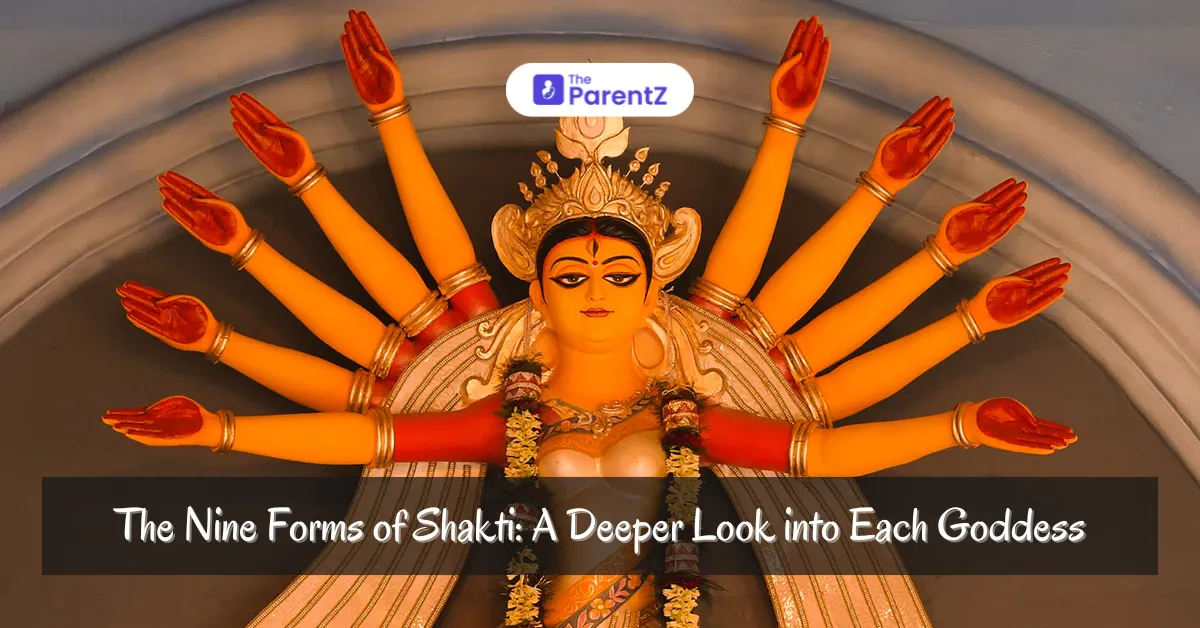The festival of Navratri, celebrated with great enthusiasm across India, honors the divine feminine energy embodied by the nine forms of Goddess Durga, collectively known as Navadurga. Each day of this nine-night festival is dedicated to a different goddess, representing various aspects of life and spirituality. Let's look deeper into each of these powerful forms.
1. Shailaputri: The Daughter of the Mountains
ॐ देवी शैलपुत्र्यै नमः
Shailaputri, or "Daughter of the Mountains," is worshiped on the first day of Navratri. She symbolizes the nurturing aspect of femininity and is often depicted riding a bull named Nandi. Holding a trident and a lotus, she embodies strength and purity. Shailaputri represents the initial stage of life, where one learns and grows under the guidance of nature and family. Her essence teaches us about our roots and the importance of familial bonds.
2. Brahmacharini: The Ascetic
ॐ देवी ब्रह्मचारिण्यै नम:
On the second day, we honor Brahmacharini, who signifies the phase of penance and devotion. Dressed in white, she carries a rosary and a water pot, symbolizing her commitment to spiritual growth and discipline. Brahmacharini encourages us to pursue knowledge and wisdom through dedication and hard work. This form represents the journey of self-discovery and the pursuit of higher truths.
3. Chandraghanta: The Warrior Goddess
ॐ देवी चंद्रघण्टायै नम:
Chandraghanta is worshiped on the third day and is recognized for her fierce yet compassionate nature. With a bell-shaped moon adorning her forehead, she rides a tiger and wields various weapons to combat evil forces. This form embodies courage and determination, reminding us that true strength lies in our ability to face challenges head-on while maintaining our compassion.
4. Kushmanda: The Cosmic Egg
ॐ ऐं ह्रीं क्लीं कूष्मांडायै नम:
The fourth day is dedicated to Kushmanda, known as the creator of the universe, from her cosmic egg (anda). She radiates warmth and energy, symbolizing creativity and fertility. Kushmanda teaches us about nurturing our ideas and dreams into reality, encouraging us to embrace our creative potential. Her presence reminds us that we are all capable of bringing forth life in various forms—be it through art, relationships, or personal growth.
5. Skandamata: The Mother of Skanda
ॐ देवी स्कन्दमातायै नम:
Worshiped on the fifth day, Skandamata represents motherhood and unconditional love. She holds her son Kartikeya in her lap while carrying lotuses in her hands. This form signifies the nurturing aspect of femininity—how a mother's love shapes her children's lives. Skandamata teaches us about sacrifice, love, and the profound bond between a mother and her child.
6. Katyayani: The Divine Warrior
ॐ देवी कात्यायन्यै नम:
On the sixth day, we honor Katyayani, who embodies power and courage. She is depicted as a fierce warrior who fought against demons to restore cosmic order. Katyayani inspires us to stand up against injustice and fight for what is right. Her essence encourages women to embrace their inner strength and assertiveness in facing societal challenges.
7. Kaalratri: The Destroyer of Darkness
ॐ देवी कालरात्र्यै नम:
Kaalratri is worshiped on the seventh day as the destroyer of negativity and darkness. With her fierce demeanor and dark complexion, she symbolizes transformation through destruction. Kaalratri teaches us that in order to create new beginnings, we must sometimes let go of old patterns that no longer serve us. She embodies resilience—the ability to rise from ashes stronger than before.
8. Mahagauri: The Purifier
ॐ देवी महागौर्यै नम:
On the eighth day, we celebrate Mahagauri, who represents purity and serenity. Often depicted as a beautiful woman dressed in white riding a bull or an elephant, she symbolizes spiritual enlightenment and inner peace. Mahagauri encourages us to seek purity in thoughts and actions while embracing forgiveness and compassion towards ourselves and others.
9. Siddhidatri: The Bestower of Boons
ॐ ऐं ह्रीं क्लीं सिद्धिदात्यै नम:
Finally, on the ninth day, we honor Siddhidatri, who grants spiritual powers (siddhis) to her devotees. She embodies fulfillment and achievement in both material and spiritual realms. Siddhidatri teaches us that true power lies in understanding oneself deeply—knowing our strengths and weaknesses allows us to navigate life with grace.
Connecting the Goddesses to the Stages of Womanhood
The nine goddesses of Navadurga beautifully mirror the stages of a woman's life. Shailaputri represents the innocence of childhood, while Brahmacharini signifies the quest for knowledge in adolescence. As women transition into adulthood, Chandraghanta embodies the role of a partner, and Kushmanda reflects the nurturing spirit of motherhood. Skandamata emphasizes unconditional love, while Katyayani inspires strength in facing challenges. Kaalratri represents transformation through adversity, leading to Mahagauri, who embodies wisdom and purity. Finally, Siddhidatri symbolizes the culmination of this journey, where women embrace their power and share their gifts with the world, inspiring future generations.
Conclusion
Each goddess in this divine pantheon not only represents different stages in a woman's life but also serves as a metaphor for personal growth, resilience, empowerment, and spirituality. As we celebrate Navratri by invoking these forms of Shakti (divine energy), let us reflect on their teachings—embracing our inner strength while nurturing compassion for ourselves and others.
In this festival dedicated to femininity, may we find inspiration in each goddess's journey—from being daughters to warriors—and strive for balance in our lives just as they embody harmony within themselves.








Be the first one to comment on this story.